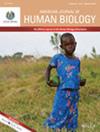Evaluation of the Relationship Between Aggression and Digit Ratio Through a Cross-Sectional Study Among Hitit University Students
Abstract
Objectives
The second-to-fourth digit ratio (2D:4D) is widely recognized as a biomarker of prenatal testosterone exposure and has been previously linked to aggression. This association demonstrates sex-specific variability and is further modulated by both biological and environmental influences. The present study aims to examine the relationship between 2D:4D and levels of aggression, including subtypes of aggression, among university students of Turkish ethnic origin residing in the Central Black Sea region of Turkey. Additionally, the study explores sex differences in these associations.
Method
This cross-sectional study included 203 undergraduate students (108 females, 95 males) from Hitit University. Participants not affiliated with the university were excluded. The 2D:4D were measured using a digital caliper, and aggression levels were assessed using the Buss–Perry Aggression Questionnaire (BPAQ). Statistical analyses comprised the Mann–Whitney U test, Kruskal–Wallis test, and Spearman correlation analysis.
Results
In females, significant yet weak negative correlations were found between the lengths of the right-hand 2D, right-hand 4D, and left-hand 4D and both physical and verbal aggression scores (p < 0.05; r = 0.20–0.39). A weak negative correlation was also observed between the right-hand 4D and the total BPAQ score (p = 0.024, r = −0.218). Furthermore, weak positive correlations were identified between the left-hand 2D:4D and both physical aggression and total aggression scores. Among males, weak but significant positive correlations were identified between the right-hand 2D length and the left-hand 2D:4D and anger subscale scores (p = 0.043, p = 0.009; r = 0.20–0.39). Similarly, weak positive correlations were observed between the right-hand 2D and 2D:4D and hostility subscale scores (p = 0.031; r = 0.20–0.39). Additionally, a weak negative correlation was found between the right-hand 4D and verbal aggression (p = 0.017, r = −0.244). Finally, a weak but significant positive correlation was detected between the right-hand 2D:4D and the total BPAQ score (p = 0.012, r = 0.28).
Conclusions
The findings indicate that digit ratio does not exhibit marked sexual dimorphism; however, the expression of aggressive behavior appears to differ by sex. In females, shorter digit lengths (2D and 4D) are negatively associated with specific subdimensions of aggression, whereas in males, higher 2D:4D is positively correlated with anger and hostility. Although these results diverge from trends commonly reported in the literature and reached statistical significance, the low correlation coefficients warrant cautious interpretation.

 求助内容:
求助内容: 应助结果提醒方式:
应助结果提醒方式:


